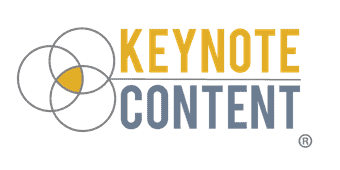As we’re going through this COVID-19 crisis, virtually every business is encountering a primarily online audience. Spoiler alert: your audience doesn’t care about your business unless they know you can give them real hope and answers right now.
One of the most frequent questions I hear from clients ranging from New York Times bestselling authors to coaches with seven-figure-plus businesses is “What’s the best way to answer my audience’s questions right now with so much uncertainty in the near future?”
Now, maybe more than ever before, your audience needs you to create great content that addresses their different questions, concerns, and challenges, specifically in a way that gives them hope and clarity for the future. With social media usage up between 35–52% across major social media platforms, people in your audience are scrambling across their screens to make some sense of the area where you can serve them the best.
01. Know What Your Audience Is Searching for Right Now, Not What They Searched for Last Month.
With each piece of content you craft, you need to focus on one specific topic and position your content as if it’s addressing that topic in the form of a question. Where most pieces of content miss the mark is that they try to answer several questions on a surface level instead of thoroughly addressing the origin, nuances, and versions of that one question.
When you start focusing on one key topic per piece of content, you need to research your topic before you can thoroughly address each nuance of that topic. Where are you getting your research? I like going to a few different websites. I recommend going to AnswerThePublic.com, BuzzSumo, KWfinder.com, or SEMrush. Google autocomplete, Twitter trends, and LinkedIn trends are also great sources of content ideas based on what your audience is interested and searching for right now.
You need to truly understand the top questions, challenges, and concerns your audience (your target Market) is asking right now, not what they were asking even a month or two ago. Instead of asking, “What’s the best way to lose weight in 2020?” your audience is likely asking more situation-specific questions such as “What’s the best way to keep from gaining weight while staying at home?” or some other form of that question. Base your content ideas off the trends of today, not the results of yesterday.
If you’re struggling to find topics from your audience, think of the top 10 questions you’re hearing from your clients or prospects right now. That only happens if you’re talking with your audience, checking in with them, making calls, reaching out, listening to what they’re experiencing right now, and most importantly, identifying the core emotions they’re demonstrating.
I’ve personally worked with over 1,100 coaches and consultants and 800 speakers one-on-one since 2016. Most of our clients right now fit in that profile of presenters or idea shapers. The questions I keep hearing are, “Jon, I was scheduled to speak at this live event. How do I now speak at an online-only event and still get some sort of speaking fee in place?” Or, “How do I continue building my business if I can’t get on the road and connect with audiences in person?” Those are some of the questions I’ve been creating content specifically to address over the past six to eight weeks.
I was talking with a speaker just this morning after we spent the past two weeks creating a new form of her content for an online-only audience. She was supposed to speak at a large tech conference for her $7,500 speaking fee plus travel (speakers, if you’re not adding travel and accommodations on top of your speaking fee, you’re leaving money on the table…). When the conference was canceled, there was a moment when the event planner considered not having her speak.
We repositioned her content based on studying the conference attendees’ profiles and my client received a $6,000 speaking fee with repositioned content that spoke to key questions the attendees shared with the event planner. She was already highly connected in her industry, but with creating a different pivot with her content from the in-person conference to a digital experience for her audience, she got a $6,000 speaking fee and an upsell into a $25,000 plus coaching program for a large tech corporation.
If you’d like to personally work with me to help you get better results with your message than ever before, visit workwithjoncook.com.
02. Create Content Based On Your Content Style and Your Audience’s Expectations
For your audience, once you identify and research their top 10 questions right now, create a piece of content specifically designed to answer one question at a time. It doesn’t have to be a long, written piece of content — a short video (2–3 minutes) is plenty of time to address their specific question in detail.
Now, you may think, “Jon, do I have to create a video? I don’t love the way I look on video.” It’s okay — not everybody loves the way they look on video, including myself, but it’s not about me. People aren’t worried about how you look. They’re worried about the value that you can transfer into their lives through your camera.
I received a call from one of our clients a little over five years that opened my eyes to content styles. She’s a bestselling author, a rising speaker based in the Midwest states of the U.S., and before I could even greet her by name, she yelled through the phone, “Jon, I hate my blog. I hate my blog!”
Knowing the anger wasn’t directed at me, I greeted her and then asked, “Why do you hate your blog?”
She said, “I spend 60 to 90 minutes, three to four days a week creating blog content. I broke down crying twice just in the last couple of weeks because I’ve been staring at that blank screen of death and nothing is coming to me!”
As we were talking in that moment, I asked her, “Are you a speaker who writes? Are you a writer who speaks?” As we talked through these different content styles, I then asked her, “Why are you blogging?”
She said, “Well, somebody told me that I should blog so I can create some more blog content and build my authority as a speaker, as a presenter in my industry.”
I said, “Well, hold on a second. Let’s get rid of should. Should is a very shameful word. We don’t need more shoulds in our life, right? You don’t need more shoulds. I don’t need more shoulds. Let’s think about the content that we can create.” I suggested she start creating short-lived videos, two– to three-minute videos, using just her phone. Then, she could post the videos and have them transcribed through Rev.com and that became her written content.
She stopped blogging, started creating the short videos once a week, and tripled the traffic to her website in less than a year. You can create content based on your content style and on your audience’s expectations. Are you a writer who speaks or are you a speaker who writes? If you’re more comfortable in front of a keyboard, type up your content and then turn it into an animated video through Missinglettr.com or any other animated video. If you don’t love writing or how you look on video, then grab a microphone and just talk for 5–10 minutes.
Whatever style of content you choose to use, focus on ‘talking’ to your audience as if it’s a one-on-one conversation with your one of your top clients.
If you’d like to personally work with me to help you get better results with your message than ever before, visit workwithjoncook.com.
03. Focus On Your Audience’s Exact Questions, Not Just Their Keywords.
Once you identify your audience’s top 10 questions based on your research, you need to position your content, specifically your headlines, in the form of questions.
As you search for different pieces of content, try to articulate the exact questions your audience is asking right now. You can start out with questions like, “What’s the best way to __________?” Or “How do I _____?” You can serve your audience better than most of your competition by creating content based on those two formats of questions.
So much of the world is going to voice-activated content. Between Alexa, Google Home, Siri, Cortana, or whomever it might be, more platforms are prioritizing voice-activated content, specifically question-focused content. We’re not saying, “Hey, Alexa, show me this ____________.” nearly as much as “Alexa, what’s the best way to ____________?” If you’re creating content that’s based on those questions, it will start to curate faster in search engines since it’s closer to the search user’s intent.
This approach will generate better results for your business because you’re serving your audience with relevant, thorough content. If we’re selling first without serving, we’re missing the point entirely, especially in a time like this. The businesses that will thrive during this COVID-19 and economic crisis are the ones who obsess with giving value in advance by creating great content that actually answers questions your audience is asking right now.
This is your opportunity to step into their search results and serve better than anyone else. Your audience needs your content — it’s your responsibility to deliver.
If you’d like to personally work with me to help you get better results with your message than ever before, visit workwithjoncook.com.

